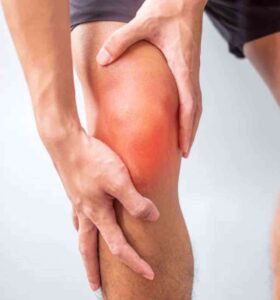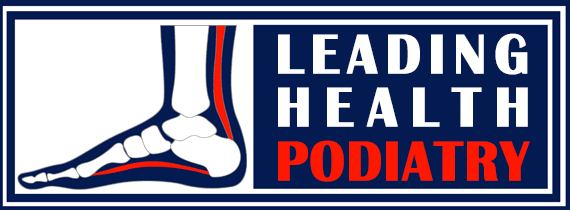Patellofemoral Pain Syndrome (PFPS)
Patellofemoral Pain Syndrome (PFPS) is a common condition that causes pain around the knee, specifically in the patella (kneecap) and/or femur (thigh bone). At Leading Health Podiatry, we provide effective treatments to help alleviate your knee pain and get you back to your normal activities.
What is Patellofemoral Pain Syndrome (PFPS)?
PFPS refers to pain in the front of the knee, often around or underneath the kneecap. This pain may also radiate to the sides or back of the knee. Typically, the pain develops gradually, without any obvious injury, and can interfere with everyday movements like walking, squatting, kneeling, or using stairs.

Understanding the Knee: Relevant Anatomy
The kneecap (patella) is attached to the quadriceps muscles at the front of your thighs. These muscles play a vital role in straightening the knee and enabling movements such as standing, walking, and running. Since the kneecap moves in tandem with the quadriceps, any dysfunction in this area can contribute to knee pain.
Symptoms of PFPS
The most common symptom of PFPS is pain in the front of the knee, especially near or under the kneecap. Sometimes, the pain may be felt deep inside or along the sides or back of the knee. Activities that often trigger or worsen the pain include:
- Squatting
- Kneeling
- Climbing stairs
- Walking or running
If these activities cause discomfort or restrict your range of motion, it may be a sign of PFPS.
Causes of Patellofemoral Pain Syndrome
Several factors contribute to the development of PFPS, including:
- Poor kneecap alignment: The kneecap can become misaligned due to tightness in the outer quadriceps or weakness in the inner quadriceps. This abnormal alignment leads to pain and dysfunction.
- Muscular imbalance: Imbalances in the muscles around the knee joint, such as the quadriceps, glutes, or calves, may cause improper knee movement and strain.
- Bony abnormalities: Structural issues in the knee, such as misaligned bones, can contribute to PFPS.
- Overuse and overload: Repeated activities or excessive strain on the knee joint, such as sports or physical labor, can lead to PFPS.
- Previous trauma: Past injuries to the knee may increase the risk of developing PFPS.
One of the most common causes is poor alignment of the kneecap, often caused by overactive or tight outer quadriceps and weak inner quadriceps.
Treatment for Patellofemoral Pain Syndrome
At Leading Health Podiatry, we address the root causes of PFPS through an individualized treatment plan that may include:
- Manual therapy: Hands-on techniques that improve knee mobility and reduce pain.
- Strengthening exercises: Targeted exercises to strengthen the quadriceps, glutes, and other muscles around the knee to improve stability and function.
- Functional exercises: Exercises that simulate everyday activities to restore proper knee function.
- Modalities: Treatments like ice, heat, or electrical stimulation to relieve pain and inflammation.
- Education: We educate you about the condition and help you modify activities and movements to avoid aggravating the knee.
At Leading Health Podiatry, we focus on consistent therapy and tailored exercises to improve knee function. Many patients experience relief and regain normal mobility with the right treatment plan.
Conclusion
If you suffer from knee pain or suspect you have PFPS, schedule an appointment with us at Leading Health Podiatry. We will assess your knee, identify the causes of your pain, and create a personalized treatment plan to help you feel better and move with ease.
Contact Leading Health Podiatry today for expert care and effective treatment for Patellofemoral Pain Syndrome.
